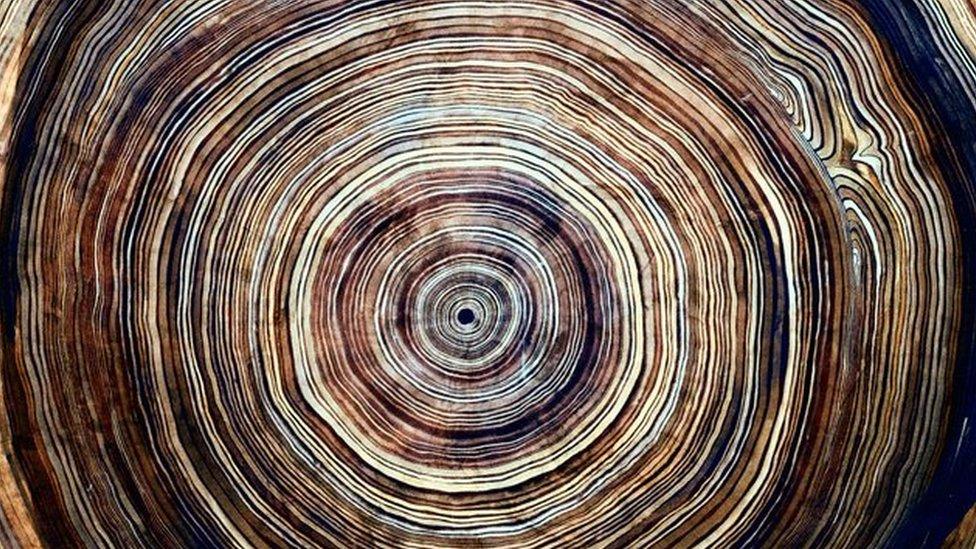Miyake Event: Trees help scientists identify 'biggest' solar storm
- Published
- comments

Did you know tree rings can help us learn about the past?
The list of benefits we get from trees is certainly a long one, from storing carbon to reducing the risk of flooding - but did you know they can tell us a lot about the past too?
Ancient tree rings have helped researchers identify the biggest known solar storm in history, when the sun emits huge bursts of energy.
According to analysis of the tree rings in the French Alps, the storm happened some more than 14,000 years ago.
Experts say if a similar storm happened today it could wipe out satellite systems and cause blackouts, costing billions of pounds.
Nasa filmed the Sun for 10 years - check out the video
Solar storms are a normal part of our Sun's solar cycle.
Sometimes described as solar flares or space weather, solar storms can reach Earth at different strengths and the energy from the Sun can create bright lights in the sky known as auroras.
In 992AD a writer in Saxony (modern-day Germany) wrote that "light like the Sun shone from the North".
Today stronger storms can interrupt radio communication and even cause power cuts, but fortunately scientists monitor the Sun to predict solar weather.
Researchers say it is important to understand solar storms to help protect communications and energy systems in the future.
An international team of researchers, including some from the University of Leeds, measured radiocarbon levels by examining tree rings in trees in the Southern French Alps.
Radiocarbon is a radioactive material that scientists can use to work out how old something is.
The long-dead tree trunks they were looking at are subfossils, a term for when the fossilisation process is not complete.
These were then sliced into much smaller single tree rings, which is when researchers spotted an unprecedented spike in radiocarbon levels 14,300 years ago.
They said the spike was most likely caused by a massive solar storm that would have ejected huge volumes of energetic particles into the Earth's atmosphere.
Solar storms are a normal part of our Sun's solar cycle
Nine extreme solar storms, known as Miyake Events, are believed to have happened in the past 15,000 years.
This newly-identified one is the biggest to be found yet and is roughly twice the size of the two that happened most recently.
Tim Heaton, professor of applied statistics in the school of mathematics at the University of Leeds, said: "Extreme solar storms could have huge impacts on Earth.
"Such super storms could permanently damage the transformers in our electricity grids, resulting in huge and widespread blackouts lasting months."
- Published3 June 2020
- Published22 October 2021
- Published5 December 2022
